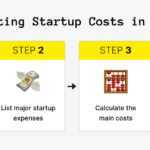Revenue forecasting is a crucial element of financial planning for food businesses. Accurate forecasting helps businesses predict future sales, allocate resources effectively, and make informed strategic decisions. Given the dynamic nature of the food industry, which is influenced by changing consumer preferences, seasonality, and market trends, robust revenue forecasting is essential for long-term success. This article explores the key aspects of revenue forecasting, including methodologies, best practices, and the tools necessary for effective forecasting.
1. Understanding Revenue Forecasting
1.1 Definition and Importance
Revenue forecasting involves predicting future sales revenue based on historical data, market analysis, and other relevant factors. For food businesses, accurate forecasting is essential for:
- Resource Allocation: Determining the necessary inventory levels, staffing requirements, and production capacity.
- Financial Planning: Developing budgets, managing cash flow, and planning for investments and expenses.
- Strategic Decision-Making: Informing decisions related to marketing, product development, and expansion.
- Risk Management: Identifying potential revenue shortfalls and implementing strategies to mitigate financial risks.
1.2 Key Factors Influencing Revenue Forecasting
Several factors can impact revenue forecasts in the food industry:
- Market Trends: Changes in consumer preferences, dietary trends, and competitive dynamics.
- Seasonality: Variations in demand based on seasonal factors, holidays, and special events.
- Economic Conditions: Fluctuations in the economy, including inflation, unemployment rates, and disposable income.
- Regulatory Changes: New regulations or changes in food safety laws that could affect operations and sales.
2. Revenue Forecasting Methodologies
2.1 Historical Data Analysis
Historical data analysis is a common method for forecasting future revenue:
- Trend Analysis: Analyzing past sales data to identify patterns and trends. This includes seasonal variations, growth rates, and fluctuations.
- Moving Averages: Using moving averages to smooth out historical data and identify underlying trends. Commonly used moving averages include simple moving averages (SMA) and exponential moving averages (EMA).
- Regression Analysis: Employing statistical methods to model the relationship between sales revenue and other variables, such as marketing expenditures or economic indicators.
2.2 Market Research
Market research involves gathering and analyzing data about the market to make informed forecasts:
- Consumer Surveys: Conducting surveys to understand consumer preferences, purchasing behavior, and demand for new products.
- Competitive Analysis: Analyzing competitors’ performance, market share, and strategies to estimate potential market opportunities.
- Industry Reports: Reviewing industry reports and market research studies to gain insights into market trends, growth projections, and emerging opportunities.
2.3 Predictive Analytics
Predictive analytics uses data-driven techniques to forecast future revenue:
- Data Mining: Extracting valuable insights from large datasets to predict future sales patterns. Techniques include clustering, association rule mining, and anomaly detection.
- Machine Learning: Applying machine learning algorithms to identify patterns and make predictions based on historical data. Common algorithms include linear regression, decision trees, and neural networks.
- Scenario Analysis: Creating different scenarios based on varying assumptions to evaluate potential revenue outcomes. This helps in understanding the impact of different factors on revenue.
2.4 Expert Judgment
Expert judgment involves relying on the insights and experience of industry experts:
- Management Insights: Leveraging the knowledge and experience of management and key staff to make informed revenue predictions.
- Consultant Input: Engaging external consultants or industry experts to provide additional perspectives and validate forecasts.
3. Best Practices in Revenue Forecasting
3.1 Set Clear Objectives
Clearly define the objectives of revenue forecasting:
- Purpose: Determine the primary purpose of the forecast, such as budgeting, strategic planning, or investment analysis.
- Scope: Identify the scope of the forecast, including the time frame, product lines, and market segments.
3.2 Use Multiple Methods
Combine different forecasting methods to improve accuracy:
- Hybrid Approach: Utilize a mix of historical data analysis, market research, and predictive analytics to create a comprehensive forecast.
- Cross-Validation: Compare results from different methods to validate and refine forecasts.
3.3 Incorporate External Factors
Consider external factors that can impact revenue forecasts:
- Economic Indicators: Monitor economic indicators such as GDP growth, consumer confidence, and interest rates.
- Regulatory Changes: Stay informed about changes in regulations and their potential impact on the business.
- Market Trends: Keep up with industry trends and emerging market opportunities.
3.4 Regularly Update Forecasts
Revenue forecasts should be updated regularly to reflect changing conditions:
- Periodic Reviews: Conduct regular reviews of forecast accuracy and adjust assumptions based on new data or changes in the business environment.
- Real-Time Data: Incorporate real-time data and sales performance metrics to refine forecasts and make timely adjustments.
3.5 Engage Stakeholders
Involve key stakeholders in the forecasting process:
- Collaborative Approach: Engage departments such as sales, marketing, and finance to gather input and ensure that forecasts align with business objectives.
- Communication: Communicate forecast results and assumptions to relevant stakeholders to ensure alignment and transparency.
4. Tools and Technologies for Revenue Forecasting
4.1 Financial Forecasting Software
Utilize specialized software for financial forecasting:
- Excel: Microsoft Excel offers a range of functions and templates for building financial models and forecasts. It is widely used for its flexibility and ease of use.
- Forecasting Platforms: Tools such as Adaptive Insights, Anaplan, and IBM Planning Analytics provide advanced forecasting capabilities and integration with other business systems.
4.2 Business Intelligence Tools
Leverage business intelligence (BI) tools for data analysis and visualization:
- Tableau: Offers powerful data visualization and reporting features, enabling users to create interactive dashboards and analyze revenue trends.
- Power BI: Provides robust data analytics and visualization capabilities, allowing users to create custom reports and forecasts.
4.3 Predictive Analytics Tools
Apply predictive analytics tools for advanced forecasting:
- SAS Analytics: Offers a range of predictive analytics solutions for forecasting and data mining.
- Google Cloud AI: Provides machine learning and AI tools for building predictive models and analyzing data.
4.4 CRM Systems
Integrate customer relationship management (CRM) systems for sales forecasting:
- Salesforce: Offers sales forecasting features and integrates with other business tools to provide insights into customer behavior and sales trends.
- HubSpot: Provides forecasting tools and analytics to track sales performance and revenue growth.
5. Challenges and Solutions in Revenue Forecasting
5.1 Data Quality Issues
Challenge: Inaccurate or incomplete data can lead to unreliable forecasts. Solution: Implement data validation processes, maintain accurate records, and use data cleaning techniques to ensure data quality.
5.2 Market Volatility
Challenge: Fluctuations in the market can impact forecast accuracy. Solution: Use scenario analysis to model different market conditions and incorporate flexibility in forecasting to adapt to changes.
5.3 Integration with Other Plans
Challenge: Ensuring that revenue forecasts align with other financial and operational plans. Solution: Integrate forecasting processes with budgeting, strategic planning, and risk management to create a cohesive financial plan.
5.4 Uncertainty and Assumptions
Challenge: Forecasts are based on assumptions, which can introduce uncertainty. Solution: Regularly review and update assumptions based on new information and adjust forecasts accordingly.
Conclusion
Revenue forecasting is a fundamental component of financial planning for food businesses. By leveraging historical data, market research, predictive analytics, and expert judgment, businesses can create accurate forecasts that support effective resource allocation, financial planning, and strategic decision-making. Implementing best practices, utilizing advanced tools, and addressing challenges are essential for maintaining the accuracy and reliability of revenue forecasts. Ultimately, robust revenue forecasting enables food businesses to navigate uncertainties, capitalize on opportunities, and achieve long-term financial success.



